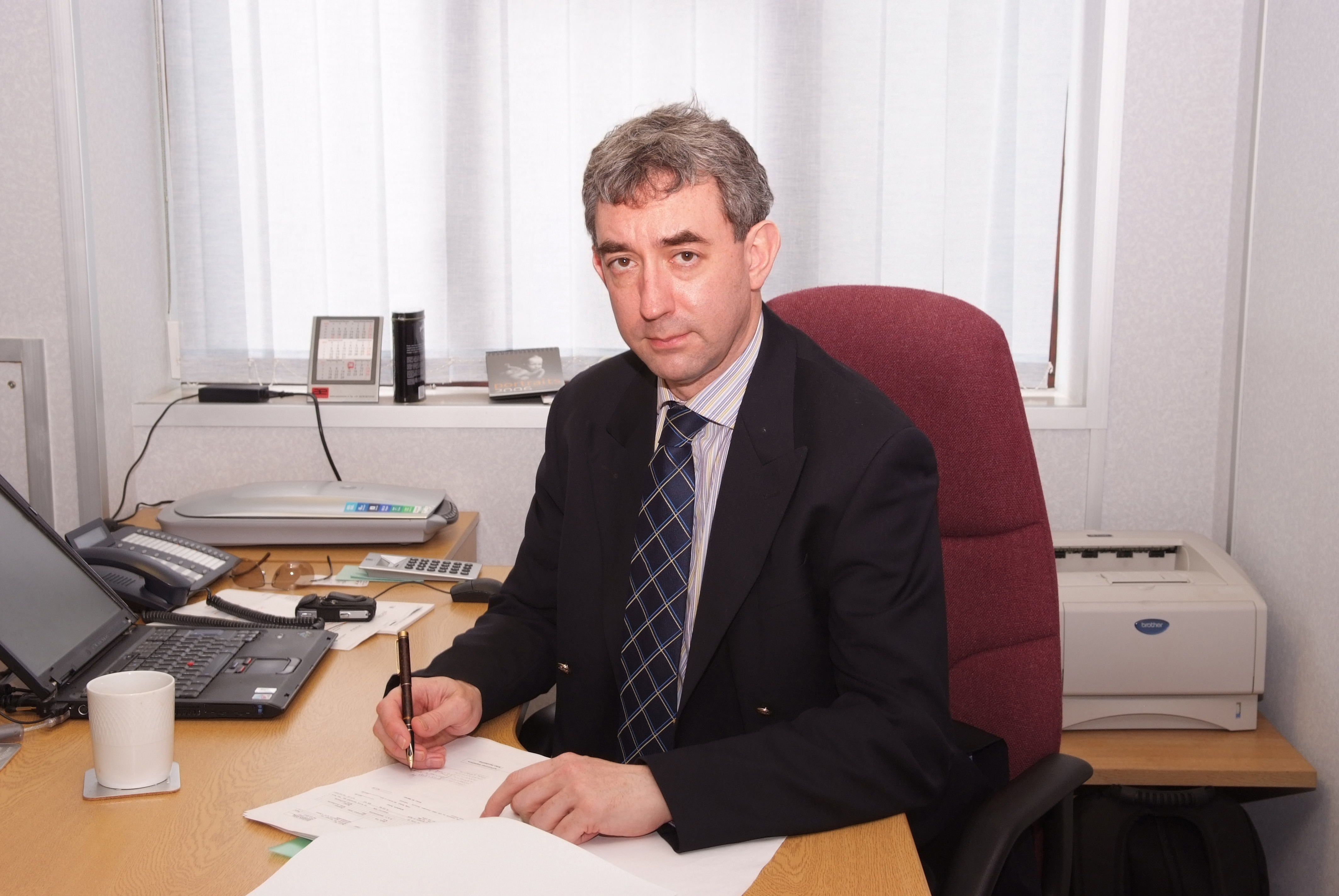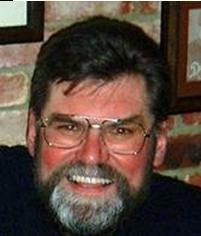 As executive director and chief strategic officer, Paul Borawski is accountable for the operations of ASQ headquarters, and is responsible for the organization's progress in reaching its vision. He provides for the ongoing exploration of ASQ's living strategy and assures the alignment of the organization resources with the strategies and goals ASQ's board of directors approves. Borawski actively promotes the application of quality management in associations and not-for-profit organizations and has given several keynote addresses, workshops, and presentations on the topic here and abroad.
As executive director and chief strategic officer, Paul Borawski is accountable for the operations of ASQ headquarters, and is responsible for the organization's progress in reaching its vision. He provides for the ongoing exploration of ASQ's living strategy and assures the alignment of the organization resources with the strategies and goals ASQ's board of directors approves. Borawski actively promotes the application of quality management in associations and not-for-profit organizations and has given several keynote addresses, workshops, and presentations on the topic here and abroad.
Q: A name like the American Society for Quality can be perceived as quite general. From a manufacturing perspective, what does ASQ strive for? What are the organization's goals?
A: Quality is a complex topic with powerful tools. Quality can be used at the enterprise level to manage the enterprise, and quality can be used for specific needs of the organization. It can be used to increase revenue, decrease cost, improve satisfaction and speed to market, eliminate waste, and improve morale. ASQ strives to help organizations understand the value of quality and then equip people with the concepts, techniques, and tools to realize the improvements and goals they set.
Paul Borawski
Q: In working with a company, like Cummins for example, how does the process initially get started? Do companies contact you, or do you reach out to them?
A: ASQ is a 60 year old organization with 100,000 members. Most large organizations like Cummins have ASQ members on their professional staffs. Larger involvement of ASQ with a company can come from within, or from our efforts to reach out. Often the offerings of ASQ fit perfectly in the strategic plans of organizations, and we can help them accelerate their schedules and get results sooner.
Q: Again, quality is a rather expansive term, what exactly do you focus on when working with manufacturers? Products? Processes? Training? Is there a generic starting point?
A: We start where the company wants benefits. Every organization differs in needs and abilities. Some organizations are just discovering modern quality, others are mature sophisticated practitioners. Some companies just want to fix a problem; others want to move their entire company to a higher level of performance. There's no common starting point, and there's no finish line. Organizations are complex, the world is complex and constantly changing. What represents world-class performance in 2000 is antiquated by 2007. Quality is that systematic pursuit of excellence, year after year.
Q: We're all familiar with some of the common problems currently facing manufacturers, whether it's rising energy costs, off-shore competition or escalating health care premiums. What are some of the problems you've seen that might get overlooked? How were they addressed?
A: The list of problems organizations face is long: a shrinking workforce, collapsing product life cycles, a geometric rate of change, and rising customer expectations among some.
How are these addressed? Through the sleepless nights of dedicated and smart managers and executives. Through ingenuity, genius, determination, and unfailing dogged pursuit of quality. We should understand by now that there are no silver-bullet solutions. There are a lot of issues vying for the attention of business leaders in the 21st century, most notably a focus towards clear vision, sound strategy, enterprise level quality excellence, and a commitment to the customer. The challenge is to increase the rate of adoption of known solutions. That's where we, ASQ, come in. We're able to match problems with solutions and create environments in which new solutions can be germinated.
Q: It seems that terms like lean manufacturing, Six Sigma, Kaizen, etc. get thrown around a lot. Has the industry become de-sensitized to the possible impact stemming from their implementation?
A: In a word, yes
 A FEELING FOR WHAT’S LIKELY TO FAIL.
A FEELING FOR WHAT’S LIKELY TO FAIL.
.jpg) As assets become smarter and CMMS/EAM packages become more integrated across various asset classes within a manufacturing company, responsibility for facility management (including facility maintenance) has become spread over multiple departments. Historically, facility and plant maintenance were the sole responsibility of the Maintenance Department which ultimately reported to the Plant Manager or Works Manager. However, plant equipment is the focus of most Maintenance departments in a manufacturing environment, except in the largest and most complex multi-site facilities.
As assets become smarter and CMMS/EAM packages become more integrated across various asset classes within a manufacturing company, responsibility for facility management (including facility maintenance) has become spread over multiple departments. Historically, facility and plant maintenance were the sole responsibility of the Maintenance Department which ultimately reported to the Plant Manager or Works Manager. However, plant equipment is the focus of most Maintenance departments in a manufacturing environment, except in the largest and most complex multi-site facilities.  It is common knowledge that a range of Condition Monitoring (CM) techniques are available such as Vibration Analysis, Oil & Wear Debris Analysis, Thermography and Acoustic Emission. Each of these techniques has its own particular areas of strength and in this regard the Acoustic Emission (AE) technique has the noted advantage of giving real time information with early sensitivity to faults and applicability to a wide range of rotational speeds including slowly rotating (source : ISO 22096).
It is common knowledge that a range of Condition Monitoring (CM) techniques are available such as Vibration Analysis, Oil & Wear Debris Analysis, Thermography and Acoustic Emission. Each of these techniques has its own particular areas of strength and in this regard the Acoustic Emission (AE) technique has the noted advantage of giving real time information with early sensitivity to faults and applicability to a wide range of rotational speeds including slowly rotating (source : ISO 22096). Thermal Imaging Engineer, Stuart Collins, uses this high-tech equipment to monitor and assess buildings, machinery and installations - saving companies time and money and preventing heat-related disasters. His cuppa: English Breakfast, milk and one sugar.
Thermal Imaging Engineer, Stuart Collins, uses this high-tech equipment to monitor and assess buildings, machinery and installations - saving companies time and money and preventing heat-related disasters. His cuppa: English Breakfast, milk and one sugar. After working both in academic research and the Pharmaceuticals industry, and having gained an MBA, I was able to put all my experience into effect when I joined the Manufacturing Institute, in June 1995, as Director of Education and New Product Development. I was subsequently appointed Chief Executive in March 1996. In this role, my aim is to deliver real results for manufacturers and show that there is a better way for UK businesses to compete than on cost."
After working both in academic research and the Pharmaceuticals industry, and having gained an MBA, I was able to put all my experience into effect when I joined the Manufacturing Institute, in June 1995, as Director of Education and New Product Development. I was subsequently appointed Chief Executive in March 1996. In this role, my aim is to deliver real results for manufacturers and show that there is a better way for UK businesses to compete than on cost." Simon works for a large manufacturer of frozen food .
Simon works for a large manufacturer of frozen food .  As executive director and chief strategic officer, Paul Borawski is accountable for the operations of ASQ headquarters, and is responsible for the organization's progress in reaching its vision. He provides for the ongoing exploration of ASQ's living strategy and assures the alignment of the organization resources with the strategies and goals ASQ's board of directors approves. Borawski actively promotes the application of quality management in associations and not-for-profit organizations and has given several keynote addresses, workshops, and presentations on the topic here and abroad.
As executive director and chief strategic officer, Paul Borawski is accountable for the operations of ASQ headquarters, and is responsible for the organization's progress in reaching its vision. He provides for the ongoing exploration of ASQ's living strategy and assures the alignment of the organization resources with the strategies and goals ASQ's board of directors approves. Borawski actively promotes the application of quality management in associations and not-for-profit organizations and has given several keynote addresses, workshops, and presentations on the topic here and abroad. Marty Osborn, senior director of industry product marketing, enterprise asset management, Infor, reveals the steps facility management companies need to take to optimise maintenance operations for their clients
Marty Osborn, senior director of industry product marketing, enterprise asset management, Infor, reveals the steps facility management companies need to take to optimise maintenance operations for their clients A very important part of a cost-effective preventive maintenance program is what I call the route-based activity. These are activities that are easiest to do, and to administer, if they are presented in a list. This list can be presented in electronic format or in a paper format and includes such activities as lubrication and inspections by maintenance craftspeople and equipment operators. There are two major things that surprise me regarding these basic preventive maintenance activities:
A very important part of a cost-effective preventive maintenance program is what I call the route-based activity. These are activities that are easiest to do, and to administer, if they are presented in a list. This list can be presented in electronic format or in a paper format and includes such activities as lubrication and inspections by maintenance craftspeople and equipment operators. There are two major things that surprise me regarding these basic preventive maintenance activities: Thermoteknix Systems Ltd
Thermoteknix Systems Ltd
